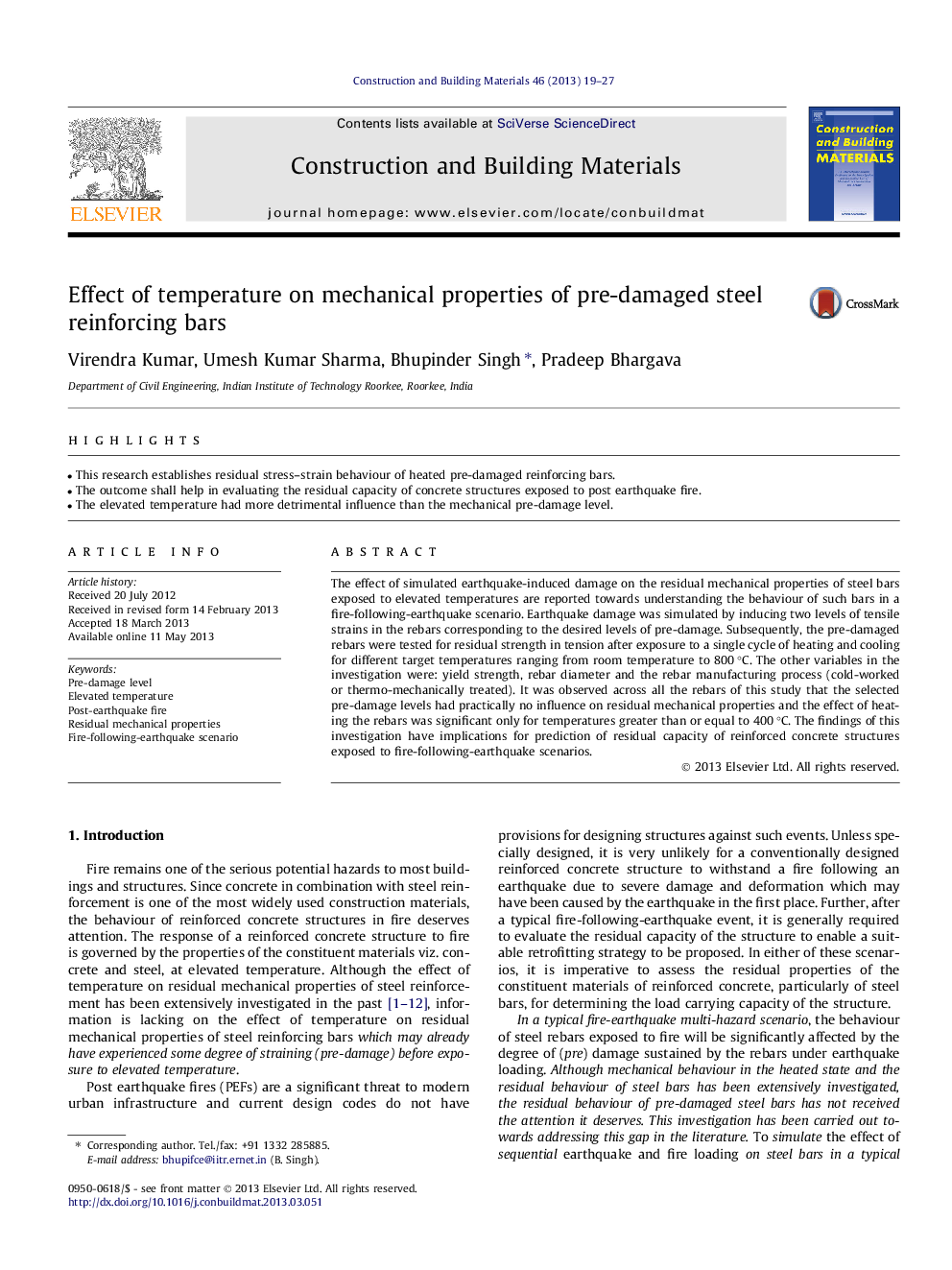| Article ID | Journal | Published Year | Pages | File Type |
|---|---|---|---|---|
| 6725552 | Construction and Building Materials | 2013 | 9 Pages |
Abstract
The effect of simulated earthquake-induced damage on the residual mechanical properties of steel bars exposed to elevated temperatures are reported towards understanding the behaviour of such bars in a fire-following-earthquake scenario. Earthquake damage was simulated by inducing two levels of tensile strains in the rebars corresponding to the desired levels of pre-damage. Subsequently, the pre-damaged rebars were tested for residual strength in tension after exposure to a single cycle of heating and cooling for different target temperatures ranging from room temperature to 800 °C. The other variables in the investigation were: yield strength, rebar diameter and the rebar manufacturing process (cold-worked or thermo-mechanically treated). It was observed across all the rebars of this study that the selected pre-damage levels had practically no influence on residual mechanical properties and the effect of heating the rebars was significant only for temperatures greater than or equal to 400 °C. The findings of this investigation have implications for prediction of residual capacity of reinforced concrete structures exposed to fire-following-earthquake scenarios.
Related Topics
Physical Sciences and Engineering
Engineering
Civil and Structural Engineering
Authors
Virendra Kumar, Umesh Kumar Sharma, Bhupinder Singh, Pradeep Bhargava,
